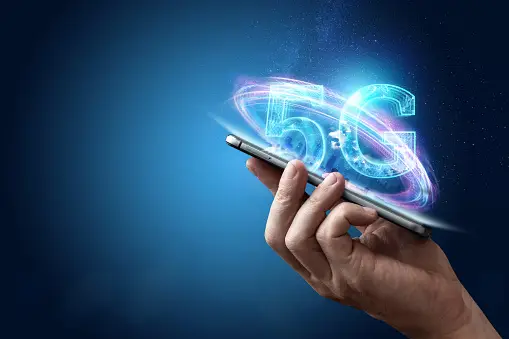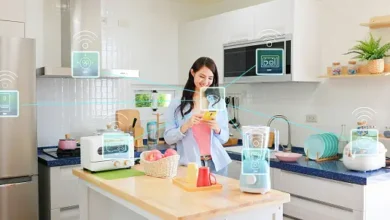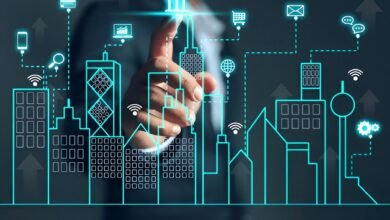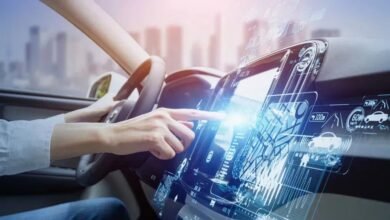
IoT And 5G: Integrating Next-Gen Connectivity In 2024? In a world where connectivity is the cornerstone of technological advancement, the integration of Internet of Things (IoT) and 5G technology emerges as a pivotal development in 2024. As we navigate the digital landscape, the synergy between these two forces is reshaping the way we live, work, and interact with the world around us.
Table of Contents
ToggleBrief Overview of IoT and 5G
The Internet of Things (IoT) refers to the network of interconnected devices that communicate and share data seamlessly. On the other hand, 5G represents the fifth generation of wireless technology, promising faster speeds and more reliable connections. The convergence of these two technologies signifies a leap forward in our digital capabilities.
Importance of Integration in 2024
As we delve deeper into the digital age, the integration of IoT and 5G becomes increasingly crucial. The year 2024 marks a turning point, where the seamless connection between devices and the lightning-fast speeds of 5G will unlock unprecedented opportunities across various sectors.
Understanding IoT
Definition and Concept
IoT, at its core, involves the connection of everyday devices to the internet, enabling them to send and receive data. This interconnectedness transforms ordinary objects into smart, data-driven entities, enhancing efficiency and convenience in our daily lives.
Current State of IoT Technology
The current landscape of IoT technology is diverse, with smart homes, wearable devices, and industrial sensors becoming commonplace. From smart thermostats that adjust based on user behavior to wearable fitness trackers monitoring our health, IoT has already made significant inroads.
Evolution of 5G
Introduction to 5G Technology
The fifth generation of wireless technology, 5G, promises lightning-fast speeds and reduced latency. This leap in connectivity is not just an incremental upgrade; it’s a transformative shift that opens new possibilities for communication and data transfer.
Advancements in 5G Connectivity
The evolution of 5G goes beyond speed. Enhanced connectivity features, such as low latency and increased device capacity, make it the ideal companion for the expanding realm of IoT applications.
Synergy Between IoT and 5G
How IoT Benefits from 5G
The integration of 5G elevates the capabilities of IoT devices. With faster and more reliable connections, data transmission becomes instantaneous, enabling real-time responses and interactions.
Enhanced Capabilities and Applications
From autonomous vehicles navigating complex traffic scenarios to smart grids optimizing energy distribution, the synergy between IoT and 5G extends the possibilities of what connected devices can achieve.
Applications in Different Industries
Healthcare
In the healthcare sector, the integration of IoT and 5G facilitates remote patient monitoring, enabling healthcare professionals to access real-time data and provide timely interventions.
Manufacturing
Smart factories leverage the combined power of IoT and 5G to enhance automation, monitor equipment health, and optimize production processes.
Smart Cities
The concept of smart cities comes to fruition with IoT and 5G integration. From intelligent traffic management to efficient waste disposal, the urban landscape transforms into a connected and responsive environment.
Challenges and Solutions
Security Concerns
The increased connectivity also raises concerns about data security. Addressing these concerns requires robust encryption, authentication measures, and ongoing vigilance to stay ahead of potential threats.
Scalability Issues
As the number of connected devices proliferates, scalability becomes a challenge. Implementing scalable architectures and standardized protocols is essential to ensure seamless integration.
Overcoming Integration Challenges
Innovative solutions and collaborative efforts are essential to overcome integration challenges. Industry stakeholders must work together to establish common standards and frameworks.
Future Trends
Anticipated Developments in IoT and 5G
The future promises even more advanced applications, such as augmented reality experiences, holographic communication, and widespread adoption of smart infrastructure.
Impact on Daily Life and Businesses
As the integration deepens, the impact on daily life becomes profound. From smart homes that anticipate our needs to businesses leveraging real-time data for strategic decisions, the synergy of IoT and 5G shapes a new normal.
Benefits for Consumers
Improved User Experience
Consumers can expect a seamless and enhanced user experience with faster download speeds, minimal lag, and the integration of smart devices that cater to their preferences.
Increased Accessibility
The widespread availability of 5G networks ensures increased accessibility, bridging the digital divide and bringing connectivity to previously underserved areas.
The Role of AI in Integration
AI’s Contribution to IoT and 5G Synergy
Artificial intelligence plays a pivotal role in optimizing the integration of IoT and 5G. Machine learning algorithms enhance data processing capabilities, making the entire ecosystem smarter and more efficient.
Enhancing Connectivity Through Artificial Intelligence
AI-driven optimizations ensure that the network adapts dynamically to changing conditions, providing a reliable and responsive environment for connected devices.
Case Studies
Real-World Examples of Successful Integration
Examining case studies reveals instances where IoTand 5G integration has led to significant improvements. For instance, in the healthcare sector, wearable devices equipped with IoT sensors transmit real-time health data to healthcare providers through 5G networks. This enables timely interventions and personalized care plans, ultimately improving patient outcomes.
In manufacturing, smart factories leverage IoT-connected sensors to monitor equipment health and production processes. The high-speed, low-latency communication facilitated by 5G ensures efficient coordination between machines, leading to increased productivity and reduced downtime.
In the realm of smart cities, the integration of IoT and 5G enables intelligent traffic management. Traffic lights equipped with sensors communicate with vehicles in real time, optimizing traffic flow and reducing congestion. Waste management systems also benefit, with smart bins signaling when they need emptying, leading to more efficient and sustainable city operations.
Regulatory Landscape
Government Regulations and Standards
As the integration of IoT and 5G becomes more prevalent, governments worldwide are establishing regulations and standards to ensure the responsible deployment of these technologies. This includes addressing privacy concerns, data protection, and interoperability issues.
Compliance and Its Impact on the Industry
Adhering to regulatory standards is not only a legal requirement but also crucial for maintaining public trust. Companies that proactively comply with regulations are better positioned to navigate the evolving landscape and foster a secure and ethical environment for IoT and 5G integration.
Future Challenges
Potential Obstacles in the Integration Process
Despite the promising future, challenges lie ahead. Potential obstacles include addressing privacy concerns, managing the massive influx of data, and ensuring equitable access to these technologies across diverse populations.
Strategies for Overcoming Future Challenges
Proactive strategies involve continuous research and development, collaboration between industry stakeholders, and engaging with policymakers to address emerging challenges. It’s essential to prioritize ethical considerations and sustainability in the pursuit of technological advancements.
Investment Opportunities
The Growing Market for IoT and 5G Integration
Investors keen on the technology sector should take note of the growing market for IoT and 5G integration. The demand for innovative solutions and the potential for transformative impact present lucrative opportunities for those looking to invest in the future of connectivity.
Potential for Investors and Businesses
Businesses that embrace and invest in IoT and 5G integration position themselves as pioneers in the evolving technological landscape. Whether through developing cutting-edge solutions or investing in infrastructure, the potential for growth and success is substantial.
Expert Opinions
Insights from Industry Experts
Industry experts emphasize the transformative power of IoT and 5G integration. Their insights highlight the potential for societal benefits, economic growth, and the need for responsible deployment to ensure a positive impact on our connected future.
Perspectives on the Future of IoT and 5G
Experts envision a future where the seamless integration of IoT and 5G becomes ubiquitous. From personalized healthcare solutions to smart cities that enhance quality of life, their perspectives shed light on the exciting possibilities that lie ahead.
Read More; IoT and Smart Grids: Transforming Energy Distribution In 2024
Conclusion
In conclusion, the integration of IoT and 5G in 2024 represents a paradigm shift in connectivity. The synergy between these technologies opens doors to unprecedented advancements across various industries, paving the way for smarter living and more efficient business operations.
The journey towards a fully connected future is not without challenges, but with innovation, collaboration, and a commitment to ethical practices, the potential benefits far outweigh the risks. As we embrace the next generation of connectivity, the dynamic interplay between IoT and 5G will continue to shape our digital landscape in profound ways.
FAQs : IoT And 5G
What is the primary advantage of integrating IoT and 5G?
The primary advantage lies in the enhanced capabilities and real-time communication between interconnected devices, leading to improved efficiency and user experiences.
How does AI contribute to the synergy of IoT and 5G?
AI optimizes the integration by enhancing data processing capabilities, making the entire ecosystem smarter and more efficient in adapting to changing conditions.
What are the challenges associated with IoT and 5G integration?
Challenges include security concerns, scalability issues, and potential obstacles in addressing privacy concerns and managing the massive influx of data.
How do smart cities benefit from IoT and 5G integration?
Smart cities benefit from optimized traffic management, efficient waste disposal, and overall enhanced urban living through interconnected devices and high-speed communication.
What investment opportunities does the integration of IoT and 5G offer?
The growing market presents lucrative opportunities for investors and businesses looking to contribute to and capitalize on the transformative impact of IoT and 5G integration.










